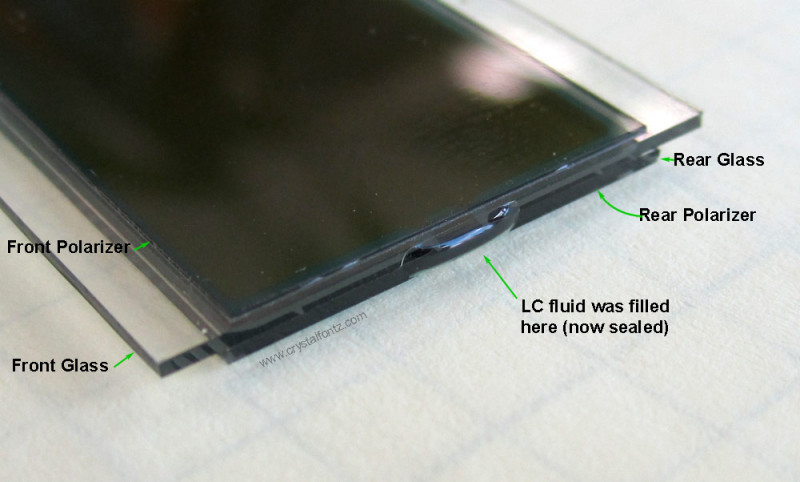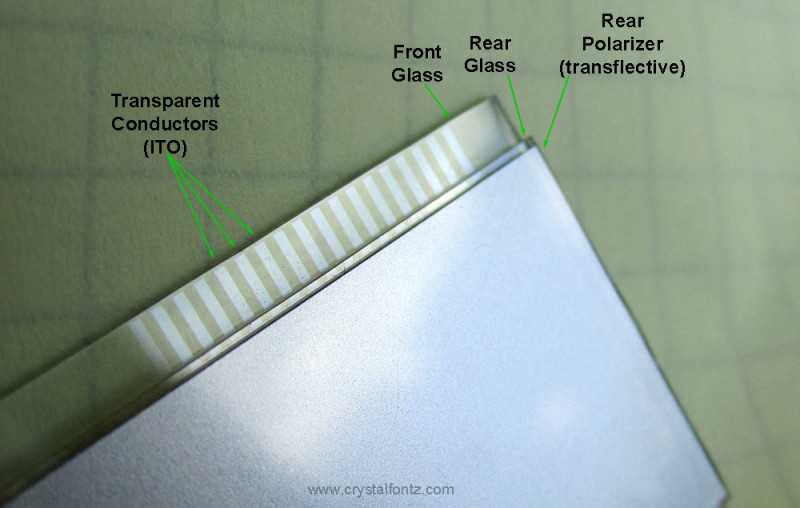LCD
LCD stands for Liquid Crystal Display. An LCD is composed of two pieces of glass with a thin layer of liquid crystals between the glass layers. When a voltage is applied to the glass, the orientation of the crystals can be changed. This change in the crystal’s orientation (called polarization) will make either a dark or a light area, creating a character or image on the display.
Detailed Definition
Polarizers are applied in front of the front glass and behind the rear glass. The glass has patterns of transparent conductors on it.
As voltage is applied to the conductors, the polarization of the liquid crystal between the glass can be changed. This change in the liquid crystal’s polarization, combined with the polarizers, can make either a dark or a light area on the display.


The shape of the area that changes from light to dark (on a positive mode display) or dark to light (on a negative mode display) is defined by the intersection of the transparent conductor on the front glass and the transparent conductor on the back glass.
On most displays the conductors are arranged in a typical rows-and-columns fashion, so that the intersections form a 2-dimensional array of square pixels (Picture Elements).
In the United States, this term — LCD — is often used for what is more correctly called an LCM (Liquid Crystal Module). To avoid confusion, some people refer to the LCD portion of an LCM as the “LCD glass.”
Questions?
If you have any questions, please contact our knowledgeable and friendly support staff by email, phone, or chat.